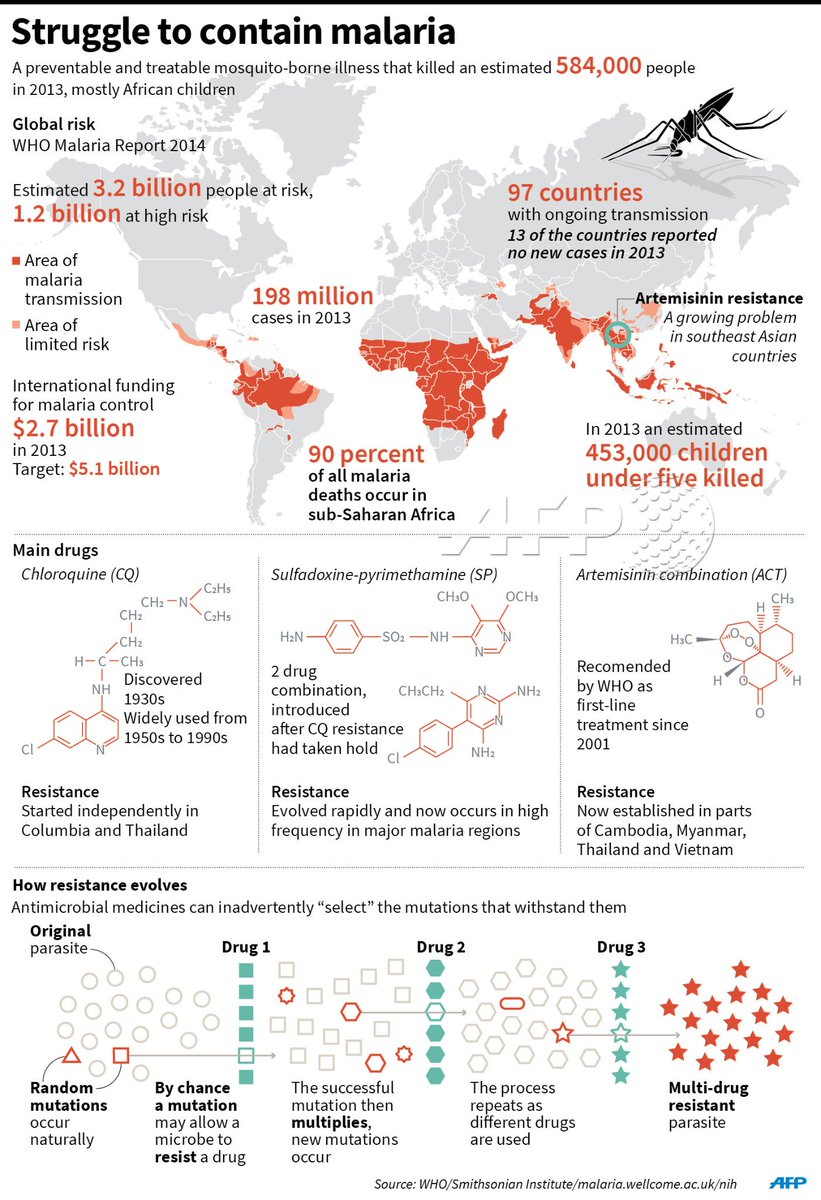Can we dispel common misapprehensions about fighting malaria?
In fighting malaria, DDT is not used outdoors. Spraying swamps with insecticide does little to combat malaria because malaria-carrying mosquitoes don’t usually breed or rest there, and collateral damage from DDT reduces mosquito predators.

USAID-paid workers conducting Indoor Residual Spraying (IRS) campaign. (Where? When?) USAID photo, via Stanford University, Human Biology 153
DDT’s utility in fighting malaria comes from its persistence when used close by humans bitten by those species of mosquito that carry malaria. Malaria is a parasitic disease. Malaria parasites complete their life cycle in a human host (victim), and any insect taking blood from an infected human gets some of those parasites. The parasite completes another phase of its life cycle in certain species of mosquito — not flies nor other biting insects — and after about two weeks, mosquitoes can infect humans with newly-ready parasites.
Those species that carry malaria are usually active from about dusk until after midnight. Consequently, they bite people usually as they sleep. Because the “blood meal” is heavy, newly-fed mosquitoes usually fly to a nearby wall of the home to excrete water from the meal, so they fly with a lighter load. If DDT, or some other pesticide, coats that wall, the mosquito will die before being able to pass new parasites on to new victims.
DDT is NOT used to spray outdoors, to fight malaria. Among other things, outdoor spraying threatens domestic animals and any creature that preys on the malaria-carrying mosquito; as a pragmatic matter, outdoor use affects only a tiny percentage of malaria-carrying mosquitoes. Malaria-carriers tend to breed in small, temporary pools of water from rain; this transience makes outdoor fighting difficult. Many people fail to understand this crucial point: DDT outdoors doesn’t help in the fight against malaria. (Other outdoor campaigns can provide relief, such as elimination of old tires, filling potholes in roads, draining raingutters, and generally eliminating the mosquito breeding areas close to human homes, since mosquitoes rarely move more than about 50 yards in their lifetime.)
It’s important to realize that DDT in IRS allows a mosquito a free first bite. The hope is that bite is from an uninfected mosquito, who will then land on the treated wall of the home and get a fatal dose of pesticide, so that spreading malaria it may have picked up from its victim, is stopped. Bednets, which form a physical barrier, prevent even the first bite. Bednets gain effectiveness from treatment with impregnated insecticides.
The U.S. Centers for Disease Control, the lead agency in the campaign to eradicate malaria from the U.S. after World War II, explains this use of DDT in Indoor Residual Spraying, or IRS:
Indoor Residual Spraying
Many malaria vectors are considered “endophilic”; that is, the mosquito vectors rest inside houses after taking a blood meal. These mosquitoes are particularly susceptible to control through indoor residual spraying (IRS).
What Is Indoor Residual Spraying?
As its name implies, IRS involves coating the walls and other surfaces of a house with a residual insecticide. For several months, the insecticide will kill mosquitoes and other insects that come in contact with these surfaces. IRS does not directly prevent people from being bitten by mosquitoes. Rather, it usually kills mosquitoes after they have fed if they come to rest on the sprayed surface. IRS thus prevents transmission of infection to other persons. To be effective, IRS must be applied to a very high proportion of households in an area (usually >80%).
Health worker spraying insecticide on the walls of a wood and adobe dwelling, in Indoor Residual Spraying (IRS). CDC image
History of IRS
IRS with DDT was the primary malaria control method used during the Global Malaria Eradication Campaign (1955-1969). The campaign did not achieve its stated objective but it did eliminate malaria from several areas and sharply reduced the burden of malaria disease in others.
Concern over the environmental impact of DDT led to the introduction of other, more expensive insecticides. As the eradication campaign wore on, the responsibility for maintaining it was shifted to endemic countries that were not able to shoulder the financial burden. The campaign collapsed and in many areas, malaria soon returned to pre-campaign levels.
As a result of the cost of IRS, the negative publicity due to the failure of the Malaria Eradication Campaign, and environmental concerns about residual insecticides, IRS programs were largely disbanded other than in a few countries with resources to continue them. However, the recent success of IRS in reducing malaria cases in South Africa by more than 80% has revived interest in this malaria prevention tool.
Rachel Carson understood this use of DDT, and she understood that outdoor use of DDT, such as crop spraying, or fighting insects affecting trees, could induce insects to evolve resistance and immunity to DDT. In Silent Spring Carson warned that unless outdoor uses were greatly curtailed, DDT would be rendered ineffective to fight diseases. Fred Soper, the super-mosquito killer from the Rockefeller Foundation who organized and led the UN’s malaria eradication effort, also understood the race against evolution of DDT resistance. He had hoped resistance would not show up in tropical areas until the 1970s — malaria campaigns around the Mediterranean produced DDT resistance as early as 1948. Sadly, resistance to DDT was already established in many mosquito populations in tropical Africa before Soper could take the UN’s program to them. The UN had to abandon the campaign, as CDC’s explanation indicates.
Today, every mosquito on Earth carries some of the alleles of resistance to DDT, and many are immune to it.




 Posted by Ed Darrell
Posted by Ed Darrell 







